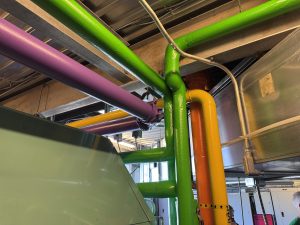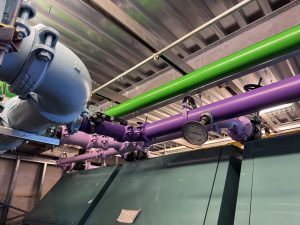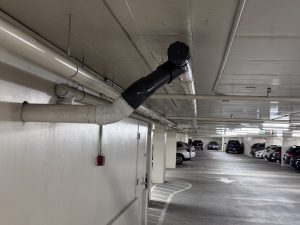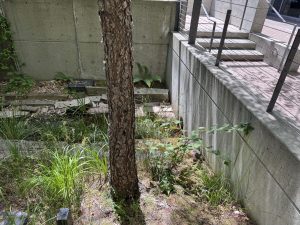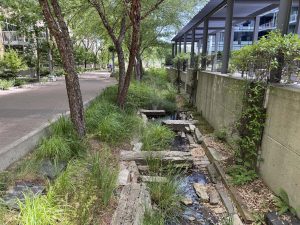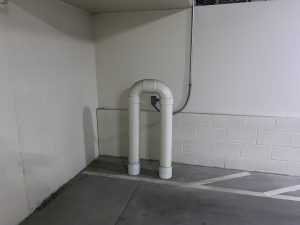Colored Pipes
The pipes in the equipment rooms are all colored for easy identification. Domestic hot/cold water, condenser water, natural gas, etc. – all have their own colors. This is done so any building engineer from another property can identify what’s what.
Groundwater Issues
Buildings with deep garages and high water tables have a major problem – you’ve got a large, hollow container displacing groundwater – in other words, the Atwater’s garage will try to be a concrete boat, and float with enough force to damage or destroy the building if the groundwater ever gets too high.
So, the solution to this is to never let the groundwater generate that buoyancy in the first place. There are 2 strategies for that – groundwater pumps, and snorkels (yes, “snorkels”).
Pumping Groundwater
Have you seen the John Ross’s “water feature” on Pennoyer? That’s actually their ground water being pumped out – that’s how much water comes in.
Our building’s parking garage floor isn’t the bottom of the Atwater’s structure. In addition to the pilings the building stands on, there’s a layer of porous gravel underneath and all around the building. Ground water flows into a pit at the very bottom of the building under the P2 garage slab.
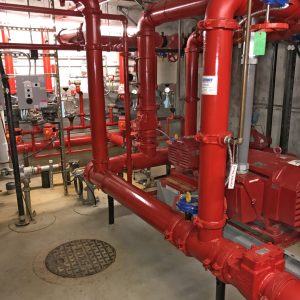
There are pumps in the tank which pump the groundwater out via the plates in the floor just behind the manhole into the pipe, which carry it outside the fire pump room
Snorkels
The building has 6 snorkels. That’s actually what they’re called in the building plans. They’re sort of a ultimate backup device to save the building from groundwater.
Those groundwater pumps must run forever in order to prevent the groundwater from getting too high. That’s why we have multiple pumps, and they’re powered by the emergency generator. But, what happens if the “big one” hits and the emergency generator finally runs out of fuel?
Eventually, the groundwater would rise so high it would damage the building. But… what if there was a fail-safe way to prevent that, by flooding the garage if the groundwater got too high?
The 6 snorkels in the garage are upside-down “U” tubes, with one end open to groundwater at the bottom, and the other end open to the garage. When the groundwater in the column reaches the top of the “U”, it will start to come out of the open end, and the garage will start flooding, reducing the buoyancy problem at the expense of damaging all the equipment in P1 & P2, so this is a last-resort emergency strategy.

The bottom of the snorkel in P2 – the tube on the right goes through the garage slab and is open to the groundwater, the open tube on the left is connected on P1
Emergency Generator
The building’s emergency generator powers the emergency equipment – 1 elevator, emergency lights, the fire and groundwater pumps, but they do not power individual units. If the building loses power, you will have no power in your unit.

Our emergency generator powers the emergency systems during a power outage – but that doesn’t include your unit!
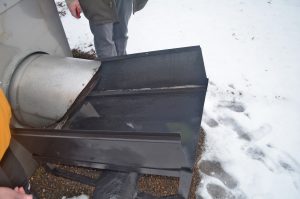
The exhaust for the emergency generator is on the eco-roof, and will cook the plants unless it’s deflected upwards
Back to Virtual Building Tour

